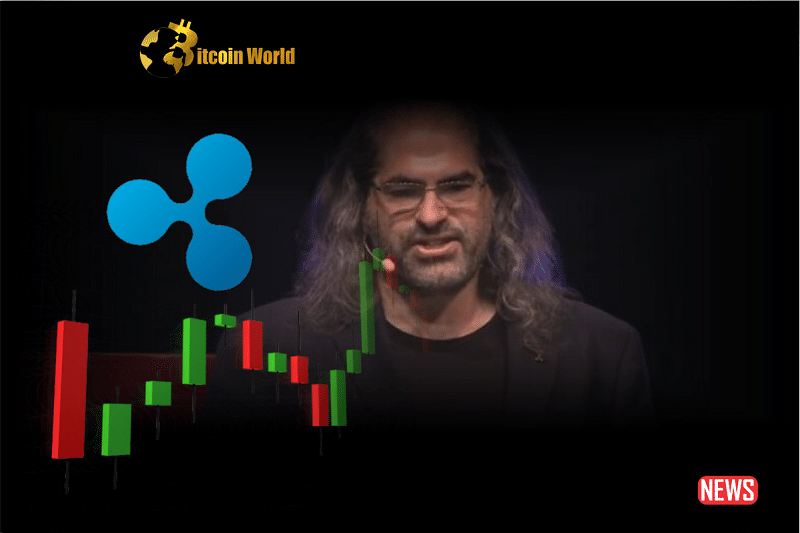Ever wondered how those Automated Market Makers (AMMs) in the crypto world actually work? It can sound like complex financial jargon, but Ripple’s Chief Technology Officer, David Schwartz, recently took to Twitter to break it down in a way that’s surprisingly easy to grasp. Think of it as a peek behind the curtain of decentralized finance (DeFi), revealing a strategy that aims to turn market swings into potential profit.
What Exactly Are Automated Market Makers (AMMs)?
Before diving into the strategy, let’s quickly recap what AMMs are. Imagine a traditional exchange where buyers and sellers meet to trade. AMMs, on the other hand, automate this process. Instead of relying on order books, they use algorithms to set prices based on the supply and demand within liquidity pools. These pools hold pairs of tokens, and when you trade, you’re essentially swapping between these tokens within the pool. Think of it like a digital vending machine for crypto!
The Volatility Advantage: Schwartz’s Simplified Explanation
Now, onto the juicy part! Schwartz explained that a core principle behind many AMM strategies is capitalizing on volatility. He highlighted a key observation: when an asset’s price fluctuates significantly (high volatility) but doesn’t necessarily have a strong upward or downward trend in the long run, there’s an opportunity.
Think of it like this:
- Price Swings: The price goes up and down, sometimes quite dramatically.
- Correction is Key: After a temporary surge or dip, the price often tends to revert back towards its average.
Schwartz illustrated this with a simple trading strategy: continuously buying or selling an asset to keep the value of your holdings constant. This approach naturally benefits from those price swings and corrections.
How Does This Apply to AMMs?
While AMMs use more sophisticated algorithms, the underlying principle remains the same. They’re designed to profit from the back-and-forth movement of prices, especially when the volatility is higher than the overall long-term trend. Schwartz specifically pointed out that this principle is most effective when an AMM is dealing with a volatile asset that doesn’t have a strong directional bias and is paired with a more stable asset (a fixed-price asset).
The XRP Angle: What Does This Mean for Holders?
This is where it gets particularly interesting for the XRP community. Users on Twitter inquired about the possibility of this type of AMM functionality being available for retail XRP holders. The good news? It seems like this is on the horizon! One user suggested it might be proposed for voting and integrated into the network layer. While Schwartz clarified that the core AMM strategy remains consistent, he reassured users that they retain control and can withdraw their funds at any time.
Potential Gains for XRP Holders: A Closer Look
Schwartz even provided a compelling example to illustrate the potential gains. He stated that even in a worst-case scenario, if the price of XRP were to double, users could still see a gain of 41%. This highlights the potential for AMMs to generate returns even in favorable market conditions.
Benefits of AMM Strategies: Why the Buzz?
- Potential for Passive Income: AMMs offer a way to potentially earn returns on your crypto holdings without actively trading.
- Automated Trading: The process is automated, removing the need for constant monitoring and manual execution of trades.
- Decentralization: AMMs are a key component of DeFi, offering a more open and accessible way to trade.
Challenges and Considerations
While the potential benefits are attractive, it’s important to be aware of the challenges:
- Impermanent Loss: This is a key concept to understand with AMMs. It occurs when the price ratio of the tokens in the liquidity pool changes, potentially leading to fewer returns compared to simply holding the assets.
- Volatility Risk: While AMMs aim to profit from volatility, extreme and unexpected price swings can still pose risks.
- Smart Contract Risk: As with any DeFi application, there’s always a risk associated with the underlying smart contracts.
Actionable Insights: What Can You Do?
So, what can you take away from Schwartz’s explanation?
- Educate Yourself: Understand the fundamentals of AMMs and impermanent loss before participating.
- Stay Informed: Keep an eye on developments within the Ripple/XRP ecosystem regarding potential AMM integrations.
- Start Small: If you decide to participate, consider starting with a small amount to gain experience and understanding.
- Do Your Own Research (DYOR): Never invest blindly. Thoroughly research any platform or strategy before committing your funds.
Example Scenario: Visualizing the Volatility Play
Imagine an XRP/USD liquidity pool. When the price of XRP fluctuates – going up and down within a certain range – the AMM’s algorithm is designed to automatically buy low and sell high within that pool, capturing the difference as profit. This happens continuously, aiming to accumulate small gains over time.
Conclusion: A Glimpse into the Future of DeFi
David Schwartz’s explanation offers valuable insight into the workings of AMMs and their potential to harness volatility for profit. As the DeFi space continues to evolve, understanding these mechanisms becomes increasingly important. The potential integration of AMM functionality within the XRP ecosystem could open up new opportunities for holders, offering a way to potentially earn passive income while contributing to the network’s liquidity. While risks are inherent, the prospect of democratizing market making and allowing individuals to participate in these sophisticated strategies is an exciting development in the world of cryptocurrency.
Disclaimer: The information provided is not trading advice, Bitcoinworld.co.in holds no liability for any investments made based on the information provided on this page. We strongly recommend independent research and/or consultation with a qualified professional before making any investment decisions.


